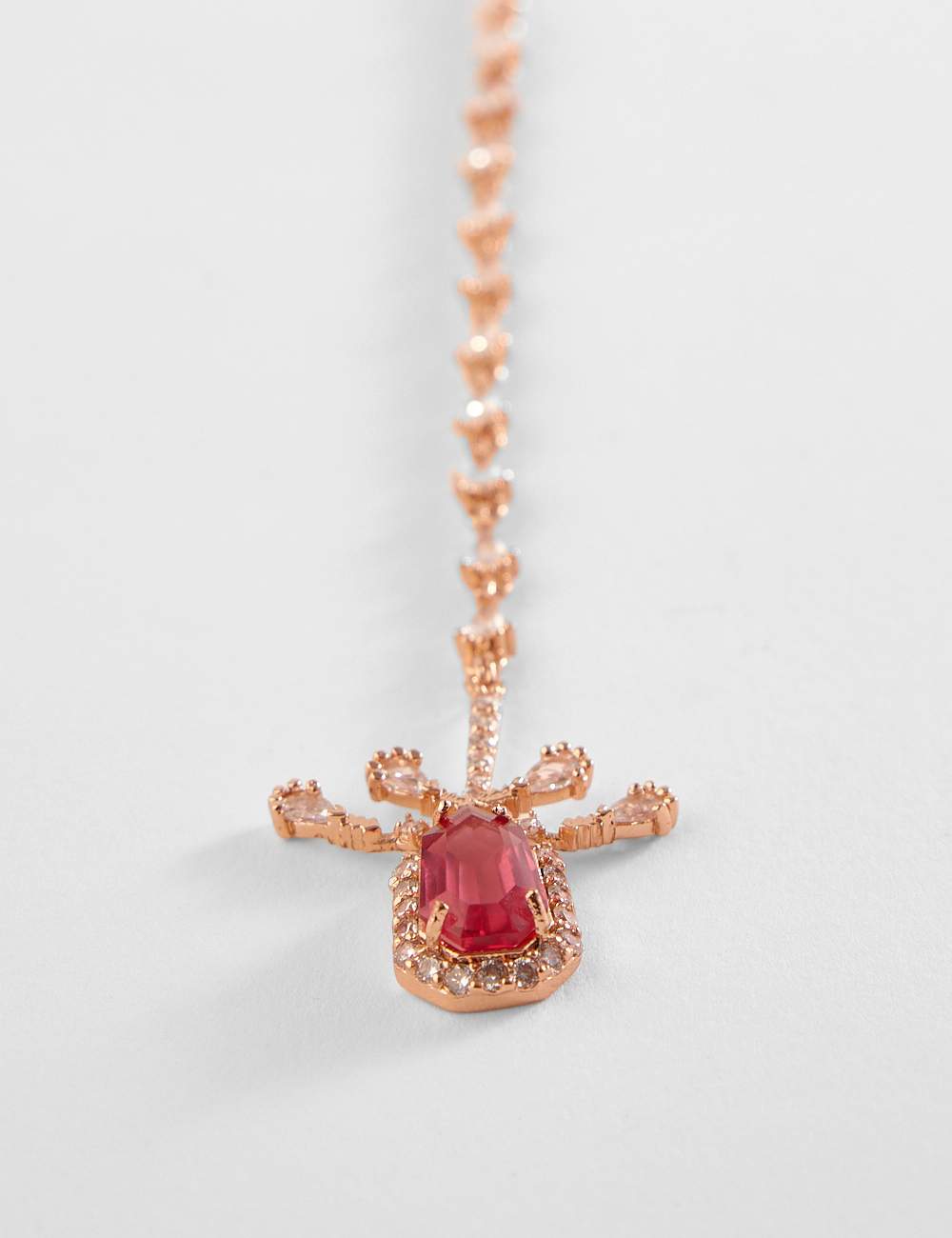

In the rich tapestry of Indian bridal jewelry, the maang tikka holds a special place. Adorning the bride’s forehead with its exquisite design and symbolic meaning, the maang tikka is a captivating piece that adds a touch of grace and allure to the bride’s overall look. In this article, we will delve into the world of maang tikkas, exploring their significance, traditional and contemporary designs, and how they are an essential part of Indian bridal jewelry.
Unveiling the Maang Tikka
The maang tikka, also known as the maatha patti, is a stunning hair ornament worn by brides in various regions of India. It consists of a pendant, typically adorned with intricate gemstones, pearls, and precious metals, attached to a chain or string that is secured in the hair. The placement of the maang tikka at the center of the forehead is believed to activate the ajna chakra, enhancing the bride’s beauty and bestowing her with blessings and good fortune.
The Symbolic Significance
In Indian culture, the maang tikka symbolizes the third eye or the seat of wisdom and intuition. It represents the union of the bride’s physical and spiritual self, signifying her readiness to embark on a new journey of marital bliss. The maang tikka also acts as a protective talisman, warding off negative energy and bringing positive vibrations to the bride’s life. Its significance lies not only in its aesthetic appeal but also in the deeper meaning it carries.
Traditional Designs and Styles
Maang tikkas come in a myriad of designs, each reflecting the cultural heritage of different regions in India. From the elaborate Rajasthani borla to the delicate Matha Patti of South India, there is a diverse range of styles to choose from. Traditional maang tikkas often feature intricate filigree work, Kundan or Polki gemstones, and motifs inspired by nature and mythology. The design and craftsmanship of a maang tikka can vary, allowing brides to find one that perfectly complements their attire and personal style.
Contemporary Interpretations
While traditional designs hold a timeless charm, contemporary maang tikkas offer a fusion of modern aesthetics and traditional elements. These designs feature a blend of gemstones, enamel work, and innovative patterns, catering to brides who seek a unique and personalized touch. From minimalist styles to bold statement pieces, contemporary maang tikkas are a testament to the evolving nature of Indian bridal jewelry.
Choosing the Perfect Maang Tikka
Selecting the right bridal maang tikka involves considering various factors, including the bride’s face shape, hairstyle, and the overall wedding ensemble. Brides with a round face shape can opt for elongated maang tikkas to create the illusion of length, while those with an oval or heart-shaped face can experiment with different styles. It is essential to balance the size and weight of the maang tikka with the hairstyle to ensure comfort and a harmonious look.
Embracing Maang Tikkas Beyond Bridal Occasions
While maang tikkas are traditionally associated with bridal jewelry, their versatility allows them to be worn for other special occasions as well. Festivals, traditional ceremonies, and cultural events provide an opportunity to adorn oneself with a maang tikka, celebrating the beauty of Indian heritage and adding a touch of elegance to any ensemble.
Conclusion
The maang tikka is a jewel that embodies the essence of Indian bridal jewelry. Its significance, symbolism, and captivating designs make it an integral part of a bride’s ensemble, enhancing her beauty and radiance. Whether embracing traditional designs or opting for contemporary interpretations, the maang tikka holds a timeless allure that transcends trends. So, let this exquisite piece of jewelry adorn your forehead, evoking grace, spirituality, and an undeniable charm as you embark on your journey as a bride.